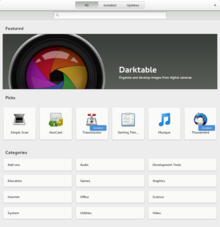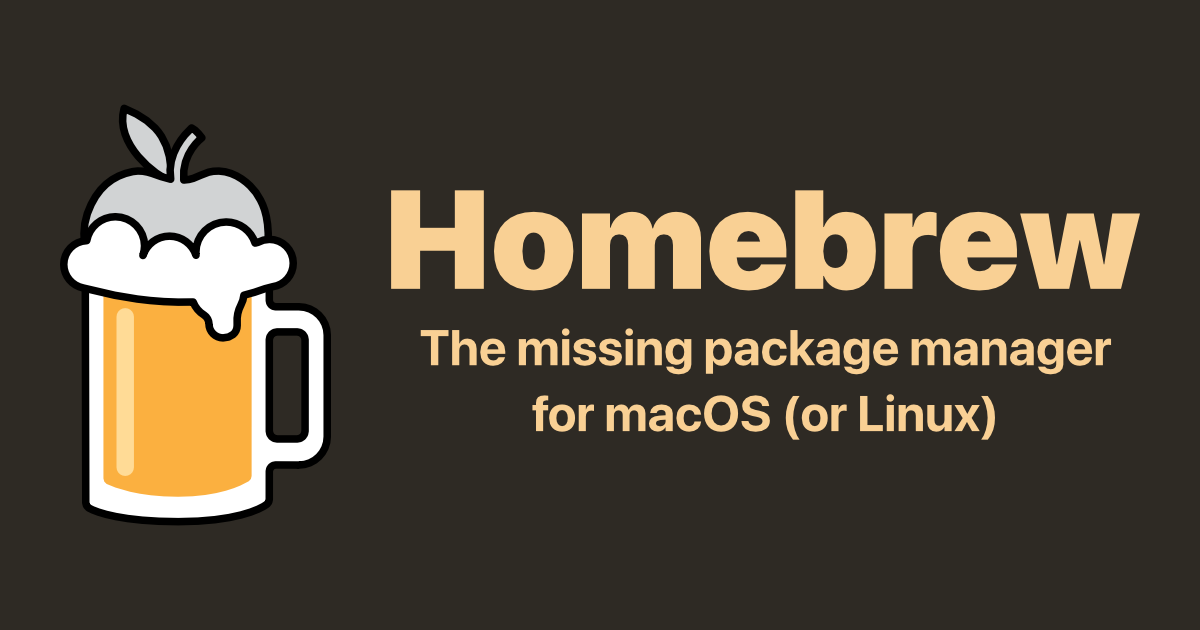Package Management System For Os X
In this short series, we'll go over package management - an essential tool for both beginner Linux users and the more seasoned system adminstrators. Package management will help you seamlessly install, upgrade and maintain software. This series will cover Debian (Ubuntu) package management for now, but we will also include lessons for Red Hat in a future lesson.
I'd like to know if anyone out there has done a comprehensive comparison of the various package manager solutions available for OS X. More specifically, I'm looking for: A list of all the major package managers (ie. MacPorts, Fink, etc) A pros and cons list or comparison matrix (either self-written or a web link to one). OS X remains less mature than that of Windows or Linux. While many Linux forensic tools will work on OS X, instructions for how to configure the tool in OS X are of ten missing or confusing. OS X also lacks an integrated package management system for command line tools. Python, which serves as the basis for many open -source forensic. A package manager or package-management system is a collection of software tools that automates the process of installing, upgrading, configuring, and removing computer programs for a computer's operating system in a consistent manner. A package manager deals with packages, distributions of software and data in archive files.
A time before package management
Long ago when software wasn't as abundant as it is today, package management was nonexistent. This meant that users had to individually download and compile source code when installing software, a process that was redundant as it was time consuming. Additionally, software that required other dependencies had to be installed separately, making the process of installing large software systems incredibly tedious. With the number of software in a person's computer increasing, so did their complexity of management, as upgrading systems had to be performed manually.
How do package managers help?
Package Management System For Os X 8
Nowadays, almost all platforms come with a designated package management system. Package managements allow you to install, upgrade, configure and remove software packages from your computer's system. At the heart of this system is a database that contains information about your softwares' last-upgrade dates, dependencies, version number, and more. Package managers allow you to conveniently manage all the software without a sweat.
How package management changed the development community
Not only has package management allowed for users to easily download and maintain software, but it has also forced developers to uphold a strict convention as to how their software is structured.
Furthermore, we now have software available in packages, with information about dependencies, and version numbers. This allows us to keep track of bug information and whether it is necessary to download security patches.
What Package Managerment software is available?
Depending on your Linux distribution, (Debian, Red Hat or SUSE), or platform (OS X), we have different package management software and tools. Onyx for mac os high sierra 10.13.
For the Debian distribution, which includes Linux Mint, Ubuntu, Debian, and Linspire, packages come in .deb files, and use tools like apt and dpkg.
Red Hat, which includes CentOS, Fedora, Mandrivia and OpenSuSE, use packaging tools rpm and yum.
For OS X, you can use Homebrew.
Review of some terminology before we begin
Package file
From the perspective of a package management system, a package file contains all the data files and programs that support the software. This is where all the metadata is found, including a description of its contents, version number and more. This also includes scripts that run before and after the installion is performed.
Dependencies
Dependencies are additional packages required by the principal package in order to function propertly. In short, it is a piece of software that is required for another to run. For example, if the year were 2004 and I wanted to watch a funny animation on the web, I would have to first install Adobe Flash Player. Thus, Adobe Flash Player serves as a dependency to flash animation videos.
Package Management System For Os X 1
Package managers maintain dependency information, allowing the system to know whether it needs to pull anything other programs in.
Here are the methods: #1 Using 3rd Party SoftwareMost of the VPNs are providing its own software for all systems and devices. https://expertsgol.netlify.app/checkpoint-vpn-for-mac-os-sierra.html. So, it’s a good option to set up VPN using third-party software. Apple has provided a hassle-free software for VPN on MacOS and you can set it up easily.Also, Read: Top Methods to Set up a VPN on Mac SierraHere, I am writing various methods to setup VPN on your macOS and you can follow any method that suits your needs. When you purchase a VPN from offline or online market, you get a DVD and software installation guide for the complete installation.For example, if you buy ExpressVPN from the official website, you get a zip file including software manual and installation file inside the zip file.
Libraries
Libraries are software components that can be shared by many different programs. This allows a reduction in disk space and memory requirements, as multiple programs are allowed to access the same files.
Checksums
The package management system uses checksumsto validate and verify installed software. Checksums allows the computer to check for disk errors or accidental overwrites of files.
Mac Os Package Manager
Sign in a root
To use any commands that have to deal with package management, you'll need to be signed in as root. To do so, use the sudo -s command, and put in your system's password when prompted.
Previous Section: Linux Philosophy and System Overview
Want to avoid becoming a code monkey?
The Pragramatic Programmer
The Pragmatic Programmer illustrates the best practices and major pitfalls of many different aspects of software development.Whether you're a new coder, an experienced programmer, or a manager responsible for software projects, use these lessons daily, and you'll quickly see improvements in personal productivity, accuracy, and job satisfaction.
$ Check priceMac Os Package
(338+ reviews)Take your Linux skills to the next level!
Command Line Kung Fu
Mac Os X Systems
Command Line Kung Fu is packed with dozens of tips and practical real-world examples. You won't find theoretical examples in this book. The examples demonstrate how to solve actual problems. The tactics are easy to find, too. Each chapter covers a specific topic and groups related tips and examples together.
$ Check price(27+ reviews)
Ad
Please enable JavaScript to view the comments powered by Disqus.Solus uses the eopkg package management system to deliver software to the end-user.
Below are some basic commands for using eopkg.

Installing Software
You can install one or more packages by using:
For example:
Reinstalling Software
You can reinstall one or more packages by using:

For example:
Uninstalling Software
You can uninstall one or more packages by using:
For example:
Get Information on Software
You can get information on software, such as its description, version, installation size, and more, by using
For example:
Updating
You can update your system by using:
If you want to only update a specific piece of software on your system, you can specify is like below:
Searching
You can search the software selection Solus provides by using:
For example:
Notice that you don’t need to search for a specific software name, although you can do that. We search summaries and software names by default.
Base Development Tools
If you are wanting to compile software under Solus, we recommend installing our system.devel component by running the following:
This will provide items such as clang, gcc, make, a multitude of devel sub-packages, and more. Our system.devel is similar to packages on other operating systems, such as Debian’s build-essentials.